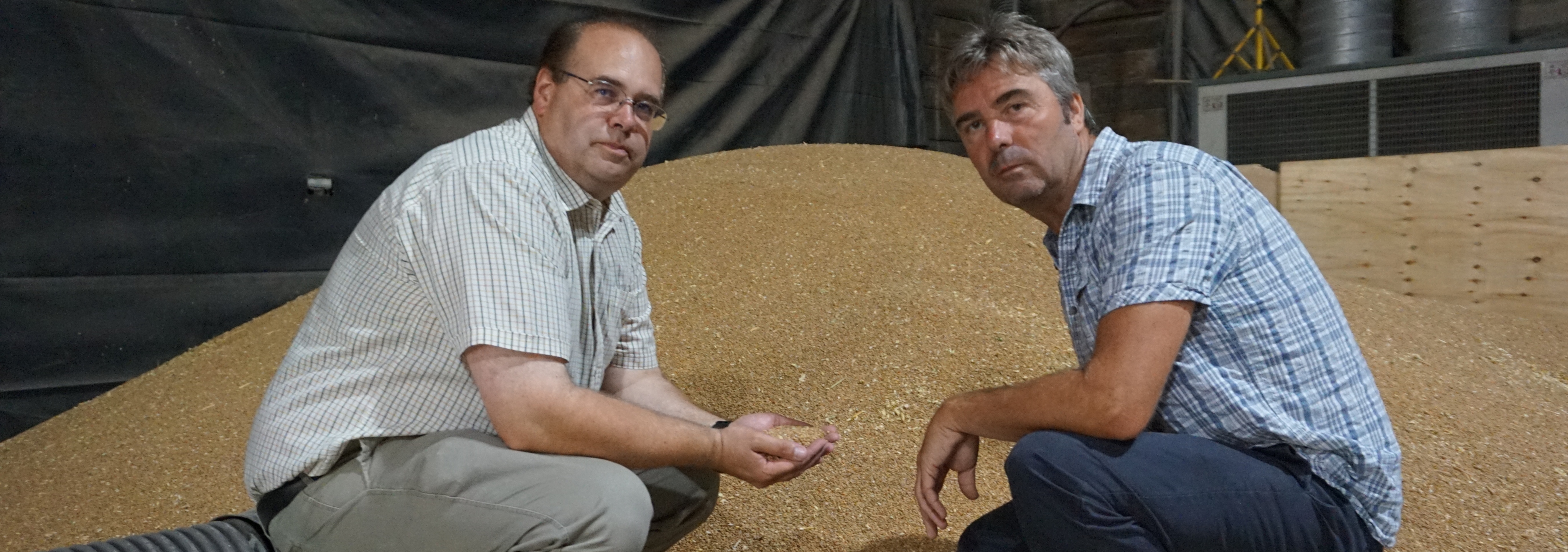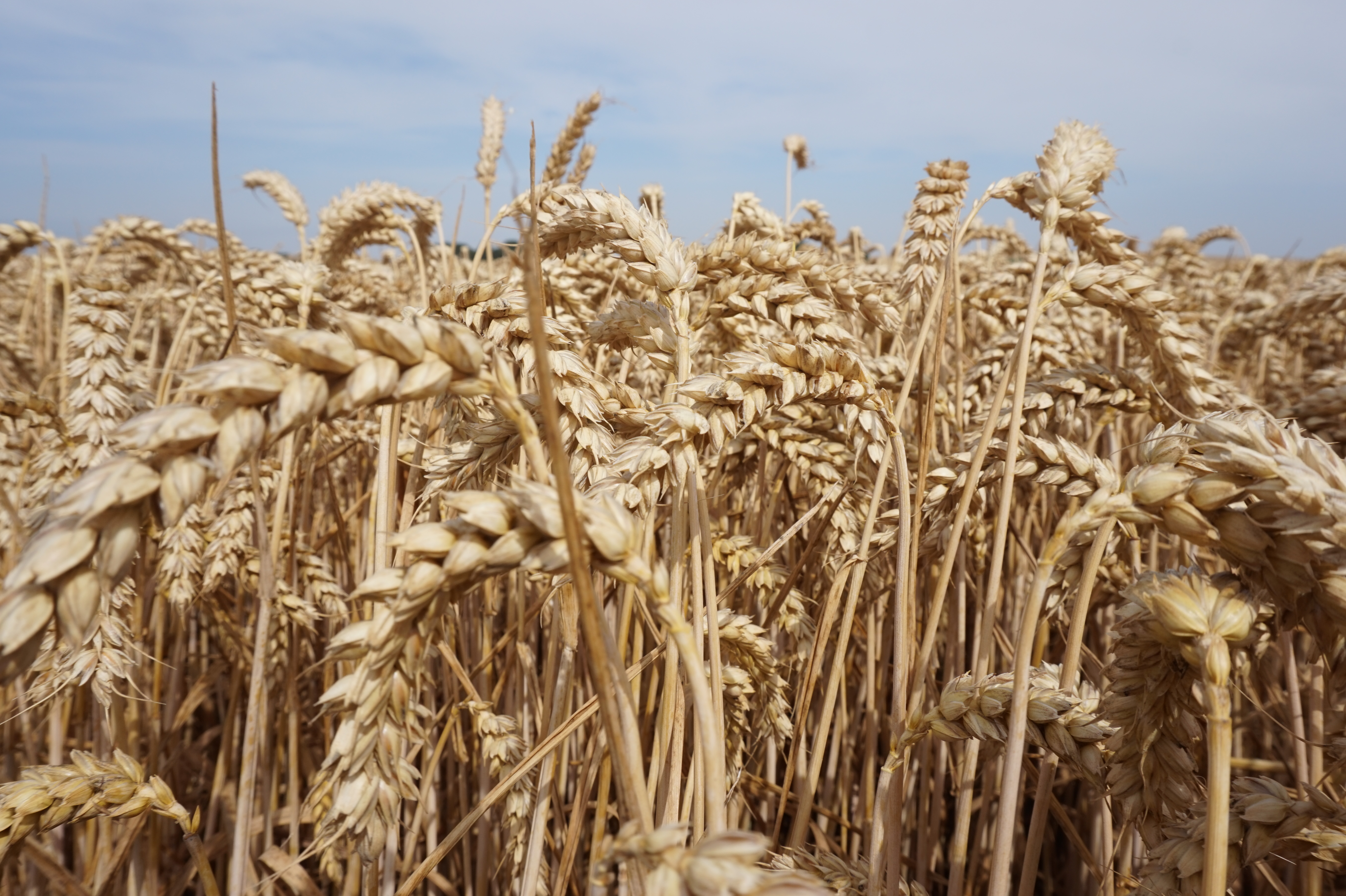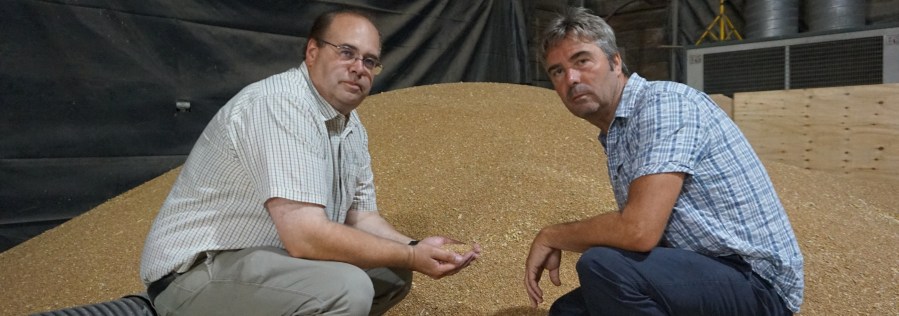
When the UK’s top-yielding wheat grower teams up with the highest yielding variety on the Recommended List, anything is possible. CPM visits Tim Lamyman to find out how he got on.
I’d be in tears if I grew a 10t/ha first wheat crop.
By Lucy de la Pasture
Mention the name Tim Lamyman and the first thing that comes to mind is world record-breaking crops. He almost has a full house of them, with an unsurpassed yield in OSR (7.01t/ha in 2018) and peas (6.47t/ha in 2017) and a previous world record (2015) for a 16.5t/ha crop of winter wheat.
But there’s a lot more to Tim’s achievements than a pursuit of records. His average wheat yield in 2018 across Worlaby Farms was 13t/ha – not bad for the fairly shallow soils of the Lincs Wolds in a year which was notable for heat stress and drought. So what’s he doing differently to consistently realise the yield potential of his crops?
Talking to Tim, it’s very clear he pays enormous attention to every detail and that includes costs. “With Brexit coming up you have to look at every aspect of costs but for me, it’s about producing maximum yield at the right cost and sometimes you have to experiment with input levels to find out where the maximum yield is.
“What I have learned is that if you don’t put enough into the crop, it costs you more money than if you put too much in. Once yields are down to 7.5-8t/ha, you’ve got to really cut cost to make an adequate return, whereas if yields are 11.5-12t/ha or more then you have a bit more room in the budget. I’d be in tears if I grew a 10t/ha first wheat crop,” he says and it’s without a hint of arrogance, more a statement of his own expectations.

LG Skyscraper recorded a specific weight of 84kg/hl at Worlaby Farms in 2018 after a summer of drought.
Tim admits that his inputs are probably £400/ha more than a 8t/ha grower but because he’s producing double their output his approach more than pays for itself. He’s pretty confident he’s built a system that’ll be alright without the backstop of farm subsidies.
The condition of the soil at Worlaby Farms plays a large part in supporting Tim’s bumper crops and has a ‘bounce’ under foot that’s often lacking in arable fields. “We look after the soil and work each field on an individual basis, doing what’s best for the field. We’ve generally been min till for the past 20 years but plough once every three to five years. We also apply muck one year in three and our soil organic matter levels range from 4-9%,” he says.
The importance of allowing farmers the freedom to make their own decisions on tillage is something the Government need to appreciate, believes Tim. “Some soils will cope with direct drilling, but others won’t. You can’t have a blanket approach to farming because it’s crucial to be able to treat each field individually.”
This autumn reinforces his point. “It’s often been too hard to direct drill, with a degree of surface loosening required before planting and some people had to return to the plough,” he adds.
In his high output system, Tim pays a lot of attention to variety selection to find varieties which he can push to the maximum. In 2017 a promising AHDB Recommended List (RL) candidate wheat variety caught his eye.
“Skyscraper looked very interesting on paper because of its yield potential. Normally I go around trial sites and look at the growth habit of different varieties to see where I can manipulate them to push their yield.
“I look at how it stands. If a variety spreads itself out, then you can’t get as many heads/m2. Ideally it wants to stand vertically upright and a key secret to high yields is a flag leaf at 45-90⁰ to the stem of the wheat plant. At this angle it allows the flag leaf to absorb more sunlight,” he explains.
The number of heads/m2 is also very important and when Tim assesses variety trials it’s one of the factors he uses to manipulate seed rates. “When Grafton first came out, I looked at trials sites and consistently saw the plots had low head numbers. It was obvious to me that it wanted 20% more seed and since then it has changed how I look at varieties.”
Ironically Tim didn’t see any trial plots of LG Skyscraper so had to go on the info the RL gave him. “The biggest mistake I made was the seed rate which was slightly light, meaning we just didn’t have enough heads/m2 to maximise yield. It’s the sort of mistake you make when you haven’t walked trials,” he admits.
“We drilled the Skyscraper in the last week of Sept, at 175kg/ha. I’ve never really done thousand grain weight, so I was caught out by its massive bold grains and we just hadn’t got enough seeds/m2. We still had a lot of heads/m2 but were 50-80 short of what I’d like for a maximum yield. I guess we were around 600-660 heads/m2 but I reckon we need over 700, with 750 heads/m2 my ideal.”
The Beast from the East wreaked havoc in the spring, burning the leaves of the Skyscraper which caught the full blast of its biting winds at 420m above sea level, meaning there was catching up to do in the spring. But even with the odds stacked against it, Tim’s crop of Skyscraper yielded an impressive 15.38t/ha, enough to justify a place in the rotation for a second year.
Getting to know a variety is important if you’re going to learn how to get the best out of it, believes Tim. “Marston took the top spot, but we’d had 3-4 years to perfect how to look after it. I know I got the seed rate wrong with Skyscraper and we’ve corrected it this autumn, planting at 250kg/ha,” he says.
Even though Skyscraper wasn’t his top yielder last year, Tim can easily identify the reasons why. Seed rate was the stand out factor, but he also observed a bigger potassium deficit during routine tissue testing in his crop of Skyscraper than in his Marston, so he knew it wouldn’t yield quite as well before the combine was even in the field.
Tim’s working closely with Limagrain’s arable technical manager Ron Granger to help him work out how to unlock the genetic potential of this barn-filling variety, set to top the new 2019-20 RL. He believes a few tweaks to his management practices in his second year growing Skyscraper will make the difference.
“One year isn’t enough to assess the potential of a variety on farm,” agrees Ron. “Skyscraper offers much more than just yield, with a respectable 2% advantage over present varieties already on the RL. It’s a soft feed wheat so challenges the perception that hard feed wheats are always the highest yielding.”
And Skyscraper also has quality to boot. Tim’s crop of Skyscraper recorded a specific weight of 84kg/hl in 2018, one of the highest specific weights ever recorded on farm at harvest.
“It’s a variety that offers flexibility when it comes to marketing because it has the additional end-use characteristic of distilling which may be worth an additional premium over standard hard feed varieties,” says Ron.
Agronomically Skyscraper also has qualities which Tim looks for in a wheat, one of these being early maturity. “It’s an important attribute on this high ground and the early maturity has really been of benefit this season.”
In the past two seasons Tim’s highest yields have all been from early-maturing wheats, he notes. Disease resistance is another characteristic he’s keen to find in a variety. “There are a lot of varieties at the top end of the resistance ratings and others at the lower end but very few in the middle. In a difficult season the extra flexibility in fungicide timings that a variety with good septoria resistance gives you can be very useful,” he comments.
“If you’ve invested in the crop’s potential and then are too late spraying with fungicide then you’ve already lost the advantage. Hitting the correct timings is an absolute must,” believes Tim.
Ron adds that Septoria tritici is relatively easily controlled if appropriately managed in varieties with a RL resistance rating of between 5.0-6.0.. Skyscraper fits into this range, with a septoria rating of 5.2.
Part of Tim’s approach to growing crops is to keep them healthy through a comprehensive nutritional support programme. This starts in the autumn to help build the all-important root structure necessary to support a high yielding crop, he explains.
“To build any plant, it’s key to get the roots going. I’ve used Bionature Delta NHK for the past 8-9 seasons. We apply it throughout the autumn, usually three times from drilling to mid-Nov, and it stimulates the production of cytokinins in the crop which are responsible for promoting fibrous root growth.”
The Delta also supplies the crop with a small quantity of the energy-efficient amine form of nitrogen, as well helping potassium uptake. “Potassium lock-up is the biggest problem we have on these Wold soils. We’ve found that the Delta produces a plant with a bigger root system and stimulates root growth through the winter, even when temperatures drop below freezing,” explains Tim.
Nitrogen is trickle fed to the crop with five applications, beginning in Feb to encourage tiller retention. Sulphur is also applied in early spring.
Tim adds some Tip Top in with the T1 and T2 sprays, it’s something he describes as a ‘trace element stimulant’. For the first time in 2018, crops also received applications of X-Stress and Calflux at T3 and T4 in an effort to keep them green for longer under the drought conditions.
“We applied the combination of products to stop calcium being stripped out of the plant and down-regulate the production of ethylene (responsible for crop senescence) under the drought stress conditions,” explains Tim.
According to Ron, Tim’s crops that had received this programme of support were indeed still green when other crops were turning and was an important factor in attaining the yields he achieved.
One of the observations often made about Skyscraper is its straw length, which Ron believes is a plus point rather than a negative. “Varieties are generally getting taller, but this can be an advantage because they’re more robust in a challenging season. There’s absolutely no reason why they can’t be kept standing with a good split PGR programme.”
Tim’s standard programme for an expected 14t/ha plus variety (with a RL lodging rating of 7) is three applications of 0.05 l/ha Moddus (trinexapac-ethyl) + 0.5 l/ha chlormequat, followed by a split application of Cerone (ethephon) at T1.5 and T2. “In hindsight I wouldn’t have applied the last application of Cerone this year,” notes Tim.
Ron is also an advocate of the little and often approach to PGR application. “High rates can murder crops and last season was a particularly difficult one,” he adds. Another plus this season has been Skyscraper’s genetic resistance to orange wheat blossom midge (OWBM), which has had a big impact on some crops, he highlights.
“It offers genetic security to growers against OWBM, though all varieties would appear susceptible to lemon wheat blossom midge which was a problem in several areas this year and is a pest we need to monitor ,” he notes.
So what is the one thing that underpins the lofty yields which Tim so regularly produces on his Wold soils? It’s something Ron can pinpoint without hesitation. “Attention to detail. Tim asks a lot of specific questions when it comes to the agronomic features of a variety. He’s prepared to learn how to grow it and then tailor his inputs to get the yield and the margin he’s aiming for.”




